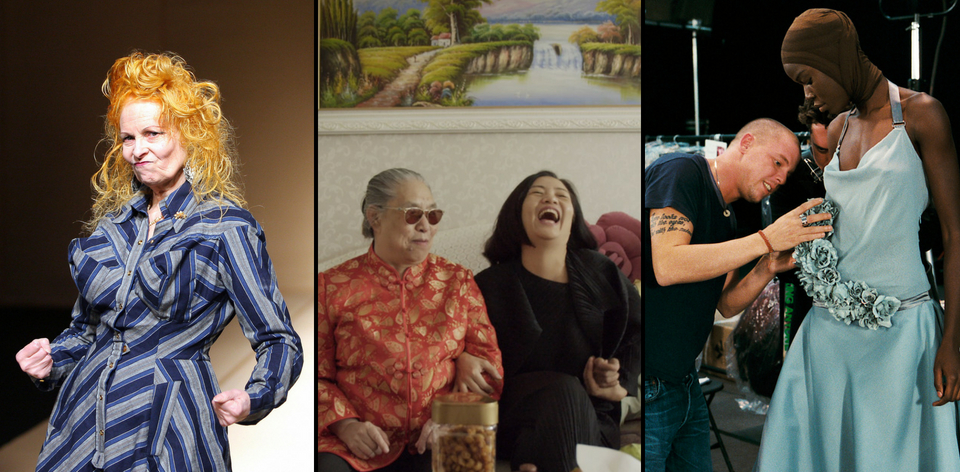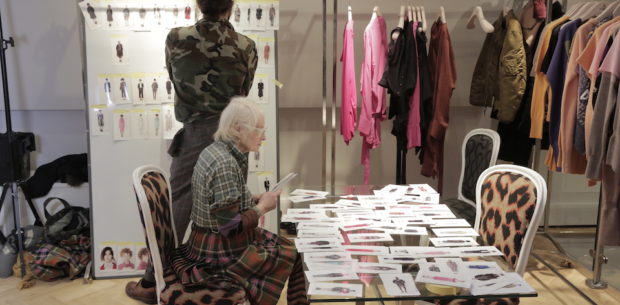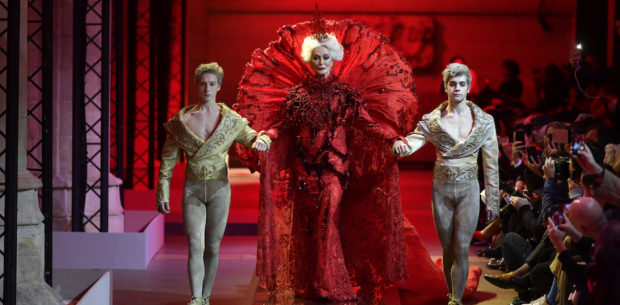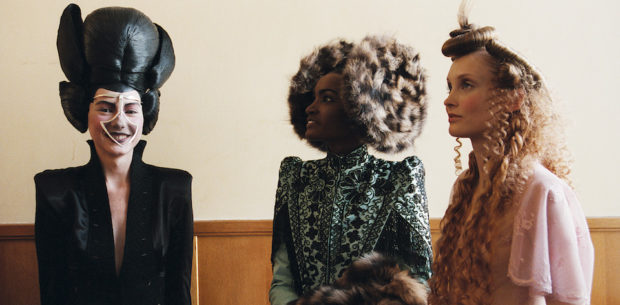“Fashion is a form of ugliness so intolerable that we have to alter it every six months,” Oscar Wilde once infamously said. He’s not wrong, but it has resulted in some terrific documentaries over the years, including The September Issue, Bill Cunningham New York, and Dior and I.
At the Sydney Film Festival this year, Madman Entertainment put three distinctive personalities with fiercely individual aesthetics under the microscope. Britain’s Vivienne Westwood is the subject of WESTWOOD: PUNK, ICON, ACTIVIST. Chinese designer Guo Pei’s quest to be part of the exclusive Haute Couture culture forms the backbone of YELLOW IS FORBIDDEN. Finally, the life and passion of the late, great Lee Alexander McQueen is explored in the eponymous MCQUEEN.
“Do we have to cover every bit of it?” wonders Vivienne Westwood at the start of Lorna Tucker’s film, one that reminds us the outspoken designer took 20 years to get industry recognition for her work. For Westwood, the process of looking back on her on life is simply “boring.” A doco filled with talking heads on Westwood’s iconic career is more thematically grouped than biographical. Jumping around her career, from the Sex Pistols to Tinie Tempah, it’s hard to determine where we are at any point in the timeline. The film’s point of view is as tightly controlled as Westwood’s grip on her own label, which is perhaps the most insight we get into her whole process. It’s harder still when Westwood herself is disinterested in the format. Still, WESTWOOD: PUNK, ICON, ACTIVIST (★★★) offers some excellent footage of her older runway shows, more recent environmentalism, and the refreshingly frank and sweary Westwood herself.
New Zealand filmmaker Pietra Brettkelly’s YELLOW IS FORBIDDEN (★★★½), on the other hand, is a fascinating portrait that gets deep into process. Like Westwood, China’s Guo Pei would happily downplay her own role in China’s fashion world. “I’m just a designer,” she insists, “not a nation.” Guo made headlines across the world with Rhianna’s 2015 Met Gala gown, a hand-embroidered canary yellow gown that took 2 years to construct. Her elaborate jewel-encrusted designs push the boundaries of what can fit on a single piece of clothing, making giants of her models and museum pieces out of evening wear. It’s at odds with her upbringing in the Cultural Revolution, where fashion was seen as light industry and women weren’t permitted to wear makeup. Brettkelly gains access to Guo’s working life and her private one, following her attempts to become only the second Asian born-and-raised guest member of the Chambre Syndicale de la Haute Couture.
The film that comes closest to capturing the right balance of biography and fashion school is MCQUEEN (★★★★). After arguably bringing chunks of the mainstream around to his savage avant garde outlook, his suicide death in 2010 shocked the world. Filmmakers Ian Bonhôte and Peter Ettedgui interview friends, colleagues, and family in an attempt to understand the often troubled mind behind his design. Structured around a series of ‘tapes,’ it’s a literal rags to riches story as the boy from London’s East End goes from apprentice at Saville Row to the head designer at Givenchy by age 27. While many will be familiar with the phenomenal Horn of Plenty (2009) or Plato’s Atlantis (2010), this intimate exploration also shows the furious intensity of his early work and the search for something deeper later in life. If nothing else, it’s a reminder to all artists to do one thing: create, create, create.
So in a time when reality shows are uncovering talent around the world, the creative process can sometimes feel as though it is something that can be reduced to digestible 45 minute chunks. Covering decades of fashion between the three films, together these three films prove that it’s difficult to capture lightning in a bottle, but you can get caught in its glow for a while.







